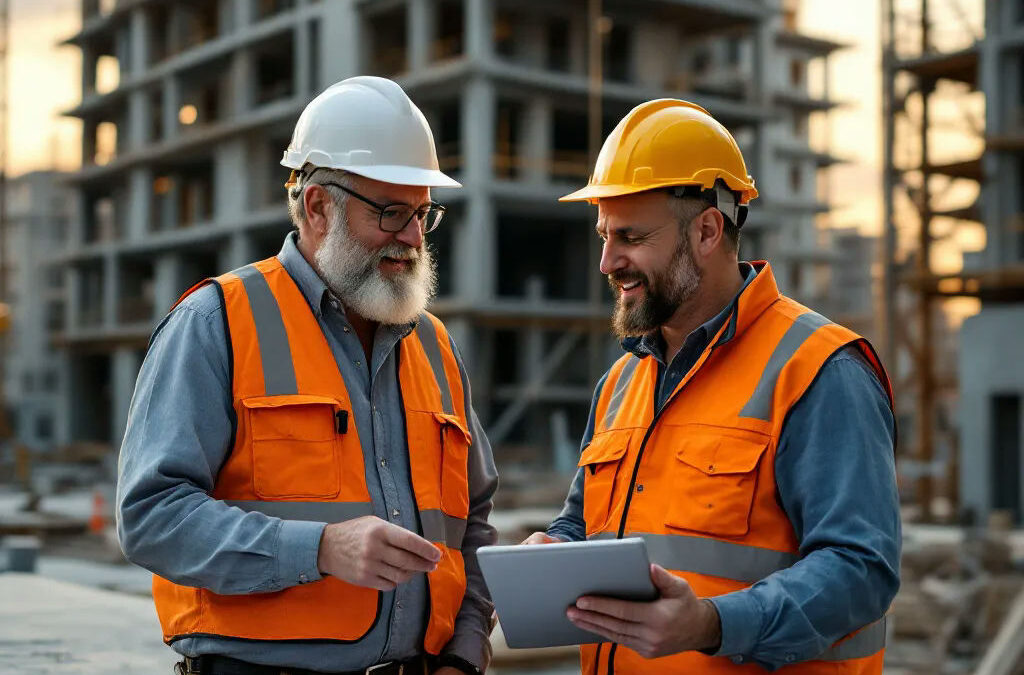I. Introduction
Collaboration between architects and concrete contractors is a vital ingredient in the success of commercial concrete projects. These projects not only serve functional purposes but also contribute to the aesthetic value and identity of urban environments. As commercial spaces continue to evolve, the synergy between these two roles is paramount to achieving innovative and sustainable designs that resonate with the community.
II. The Role of Architects in Commercial Concrete Design
Architects serve as the creative visionaries behind any concrete project, translating ideas into tangible structures. Their primary responsibilities include conceptualizing designs, ensuring compliance with building codes, and coordinating with contractors to realize their vision. The influence of architects extends beyond mere aesthetics; they also ensure that the functionality and performance of concrete structures meet the highest standards, thus enhancing usability for end-users.
III. The Importance of Material Selection
The choice of concrete material is critical in commercial projects, as it dictates both the durability and aesthetic appeal of the final product. Various types of concrete—from high-strength mixes to decorative options—are used based on specific project requirements, including load-bearing capacities and environmental factors. Architects and contractors must work together to explore sustainable concrete options, which are increasingly favored in modern design to reduce environmental impact and promote energy efficiency.
IV. Design Considerations for Commercial Concrete Projects
Designing commercial concrete structures involves meticulous attention to load-bearing requirements and overall structural integrity. Architects consider aesthetic elements such as textures, colors, and forms, which greatly influence the building’s visual appeal and functionality. Additionally, a comprehensive understanding of building codes and regulations is essential; both architects and contractors must ensure that their designs comply with local safety and zoning laws to avoid costly setbacks.
V. Effective Communication Between Architects and Contractors
Effective communication between architects and contractors is key to ensuring that a project runs smoothly and stays on schedule. Employing strategies such as regular check-ins and detailed feedback can enhance collaboration significantly. The use of advanced tools and technologies, like Building Information Modeling (BIM) and 3D modeling, facilitates real-time updates and visualizations, helping teams align their visions and make informed decisions throughout the project’s lifecycle.
VI. Overcoming Common Challenges
Every commercial concrete project faces challenges, from managing tight timelines to budget constraints. Open lines of communication can help teams swiftly address potential issues while preserving the integrity of the original design. Additionally, conflict resolution strategies, such as mediation and collaborative problem-solving, are essential during the project lifecycle to keep timelines on track and ensure a harmonious working relationship.
More insights on avoiding pitfalls can be found in our guide on the Top 7 Mistakes to Avoid in Commercial Concrete Construction.
VII. Case Studies of Successful Collaborations
Examining notable commercial concrete projects reveals the power of strong collaboration between architects and contractors. For instance, the transformation of downtown spaces through innovative concrete designs showcases how effective partnerships can yield impressive results. These case studies often highlight lessons learned, such as the importance of adaptability and communication, which can serve as guiding principles for future projects.
Discover how preparation matters in large-scale developments in our Pre-Pour Checklist for Large Commercial Concrete Jobs.
VIII. Future Trends in Commercial Concrete Design
As technology and materials continue to evolve, the future of commercial concrete design is poised to embrace innovative techniques and sustainable practices. Emerging trends include the integration of artificial intelligence and virtual reality into the design process, enhancing collaboration and enabling architects to visualize their concepts more effectively. Additionally, advancements in concrete formulations and reinforcement are driving a shift towards greener building practices, with the potential to revolutionize urban architecture.
Learn about how environmental conditions also affect design timelines in How Weather Affects Commercial Concrete Pours.
IX. Conclusion
The importance of collaboration between architects and concrete contractors cannot be overstated in the realm of commercial concrete design. A unified approach fosters innovation and leads to successful project outcomes that are both aesthetically pleasing and functional. Strong partnerships not only enhance the building process but also contribute to sustainable architectural practices that will shape our urban landscapes for years to come.
Architects and contractors are encouraged to prioritize collaboration by engaging in professional organizations and seeking resources that facilitate teamwork. By investing in strong working relationships, these professionals can create incredible structures that stand the test of time while benefiting communities. Whether you’re preparing for a bid, learning about bidding profitably, or understanding curing times don’t wait—call us now at 916-562-2345 to get a quote and start your next commercial concrete project with confidence.


